Bamboo Tree
- November 17, 2023
- 0 comment
Bamboo, a member of the Bambusoideae subfamily, is a fascinating and versatile plant that has woven itself into the fabric of human civilization. This extraordinary grass family is characterized by its rapid growth, with some species capable of achieving full maturity in a matter of weeks.
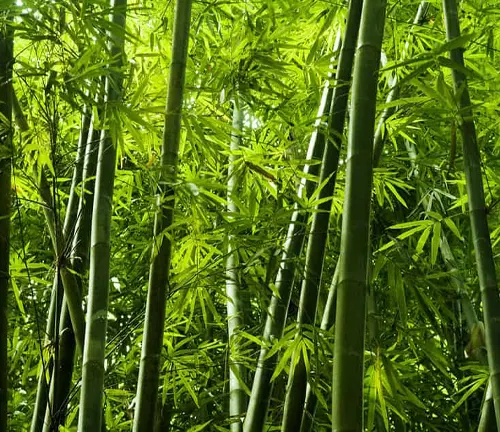
The strength, flexibility, and lightness of bamboo make it a prized material for a myriad of applications, ranging from construction and furniture to crafts and everyday items. Notably, bamboo’s eco-friendly credentials shine through its remarkable ability to sequester carbon dioxide and release oxygen, contributing significantly to environmental sustainability.
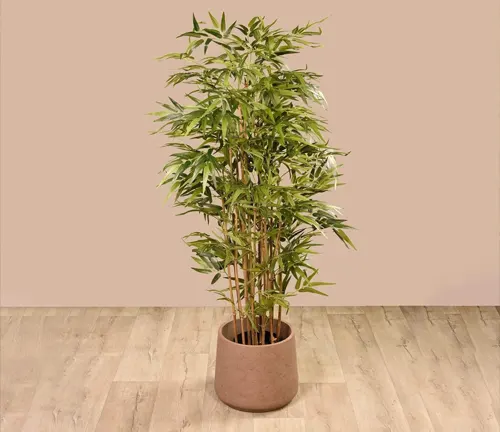
Culturally, bamboo has left an indelible mark, playing a vital role in traditional practices, art, and architecture across diverse societies. Its symbolism extends beyond utility, embodying qualities of resilience and adaptability. As the world embraces sustainable living practices, bamboo stands as a testament to the harmonious coexistence between nature and human needs, exemplifying the potential for a greener and more balanced future.
| Characteristic | Description |
|---|---|
| Family | Poaceae (grass family), subfamily Bambusoideae |
| Growth Rate | Rapid, some species can reach full height in weeks |
| Height | Variable, depending on species (ranging from a few feet to over 100 feet) |
| Strength | High tensile strength and flexibility |
| Versatility | Used for construction, furniture, crafts, and more |
| Environmental Impact | Efficient carbon dioxide absorption, oxygen release |
| Cultural Significance | Integral in traditional practices, art, and architecture globally |
| Symbolism | Represents resilience, adaptability, and sustainability |
| Habitat | Various climates, from tropical to temperate regions |
| Sustainability | Renewable resource with minimal environmental impact |
| Species Diversity | Numerous species with distinct characteristics |
Botanical Beauty of Bamboo Tree
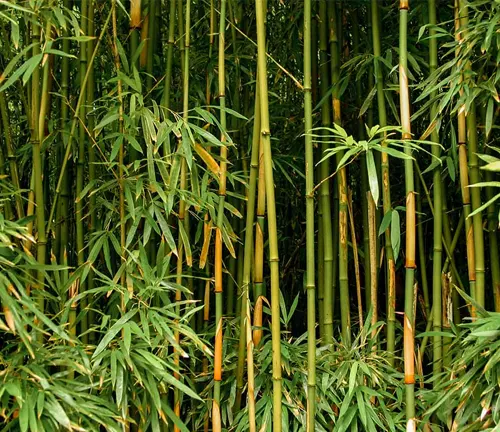
The Bamboo tree, a botanical wonder, captivates with its unique charm and aesthetic appeal. Belonging to the grass family under the subfamily Bambusoideae, this versatile plant boasts a striking appearance characterized by tall, slender stems crowned with lush, green foliage. The elegance of its form and the rhythmic pattern of its growth make the Bamboo tree a botanical beauty that has inspired artists and nature enthusiasts alike.
Woodland Elegance
In the heart of woodlands and forests, the Bamboo tree stands tall, imparting a sense of woodland elegance to its surroundings. With species ranging from the towering giants to the more delicately sized varieties, Bamboo contributes to the visual poetry of natural landscapes. Its presence brings a sense of grace to diverse ecosystems, creating a harmonious blend of strength and beauty.
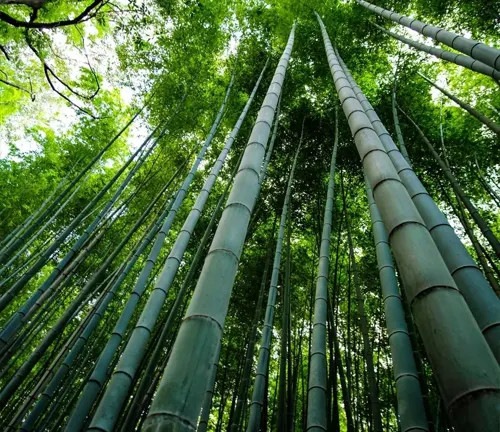
Ecological Importance
Beyond its visual appeal, the Bamboo tree plays a crucial role in environmental balance. Its rapid growth and prolific nature make it a champion in carbon sequestration, absorbing substantial amounts of carbon dioxide and releasing oxygen into the atmosphere. This ecological importance positions Bamboo as a sustainable resource in the fight against climate change, emphasizing the interconnectedness of nature and our reliance on its delicate balance.
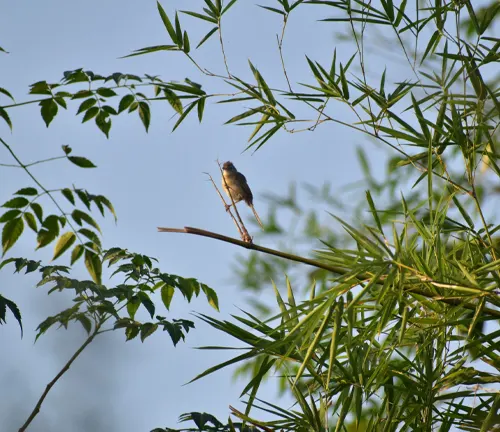
Cultivation and Conservation
Cultivating Bamboo is not just about reaping its numerous benefits; it’s also about conservation. With a multitude of species requiring diverse climates, Bamboo cultivation spans the globe. Sustainable harvesting practices and responsible cultivation contribute to the conservation of Bamboo ecosystems, ensuring the longevity of this remarkable plant and the preservation of its environmental contributions.

Fragrance
The subtle yet enchanting fragrance of Bamboo adds an olfactory dimension to its allure. Inhaling the delicate aroma of Bamboo brings a sense of tranquility, connecting individuals with nature. This natural fragrance, often associated with clean and serene environments, further enhances the overall experience of being in the presence of these graceful trees.
Soil Stabilization
Bamboo’s extensive root system plays a vital role in soil stabilization. Its intricate network of roots helps prevent soil erosion, making it an effective tool in maintaining the integrity of riverbanks and hillsides. This quality positions Bamboo as a natural safeguard against the environmental challenges posed by soil degradation.
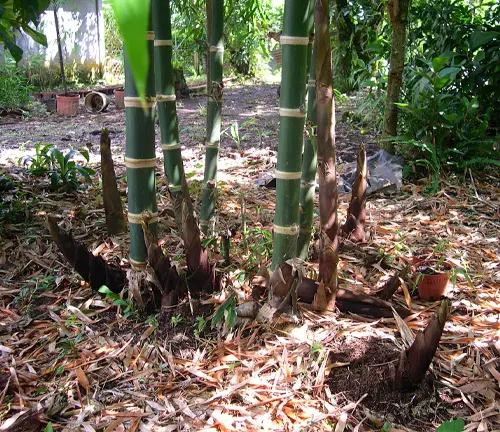
Common Uses
The versatility of the Bamboo tree extends to its various practical applications. From construction materials and furniture to handicrafts and culinary utensils, Bamboo’s uses are diverse and abundant. Its lightweight yet durable nature makes it an ideal choice for sustainable products, blending functionality with eco-friendliness.
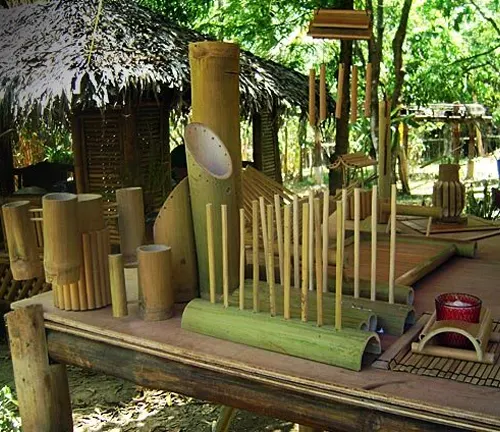
Benefits
The benefits of Bamboo are far-reaching. Apart from its environmental contributions, Bamboo offers economic opportunities for communities engaged in its cultivation and utilization. Its quick maturation and regenerative properties make it a highly renewable resource, fostering a sustainable cycle of growth and utilization.
Different Species
Giant Bamboo
(Dendrocalamus giganteus)
As the name suggests, this species is known for its impressive height, often reaching over 100 feet. It’s one of the largest bamboo species and is native to Southeast Asia.
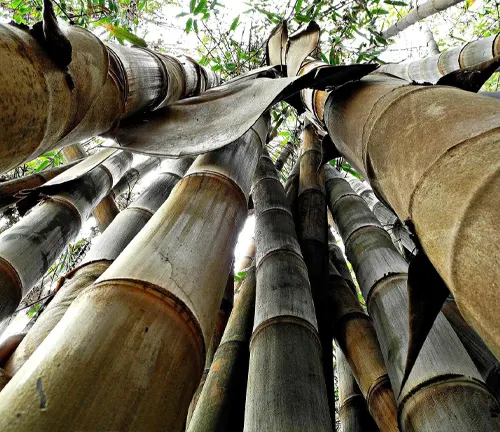
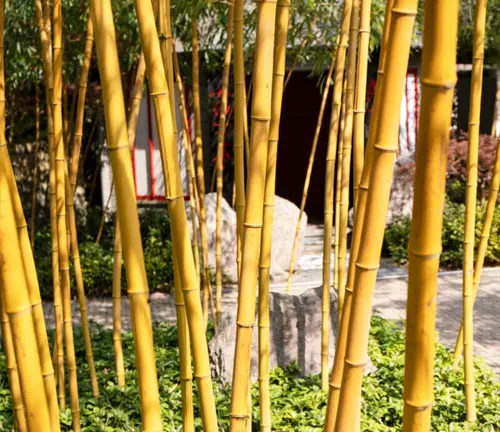
Golden Bamboo
(Phyllostachys aurea)
Recognized for its distinctive golden-yellow stems, Golden Bamboo is a popular ornamental bamboo species. It is native to China and commonly used for landscaping.
Black Bamboo
(Phyllostachys nigra)
This species is prized for its jet-black culms (stems), creating a striking visual contrast in gardens and landscapes. It is native to China and is well-suited for ornamental purposes.
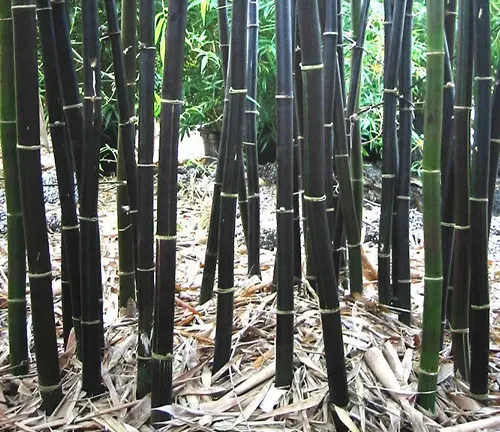

Clumping Bamboo
(Bambusa spp.)
Unlike the running bamboo varieties that spread aggressively, clumping bamboo tends to stay in tight clumps. Bambusa multiplex, for example, is a popular clumping bamboo used for hedges and screens.
Timber Bamboo
(Phyllostachys edulis)
Also known as Moso Bamboo, this species is valued for its strong and durable wood. It is a major bamboo species used in construction and for making various bamboo products.
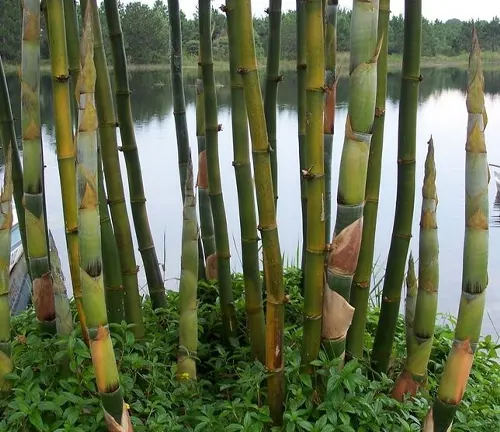
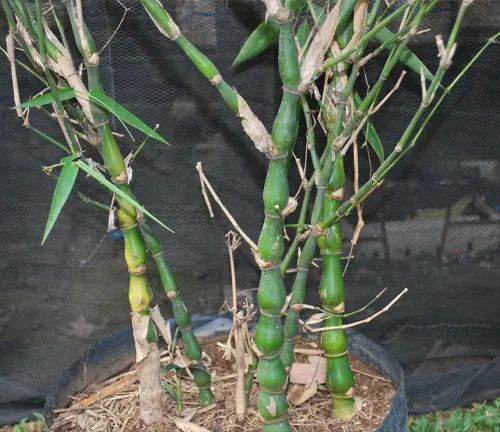
Buddha’s Belly Bamboo
(Bambusa ventricosa)
This species is named for the distinctive swollen internodes that resemble a series of “bellies.” It is often used decoratively and is native to Southeast Asia.
Arrow Bamboo
(Pseudosasa japonica)
Native to Japan and China, Arrow Bamboo is recognized for its straight culms. It is often used for crafting arrows, furniture, and as an ornamental plant.
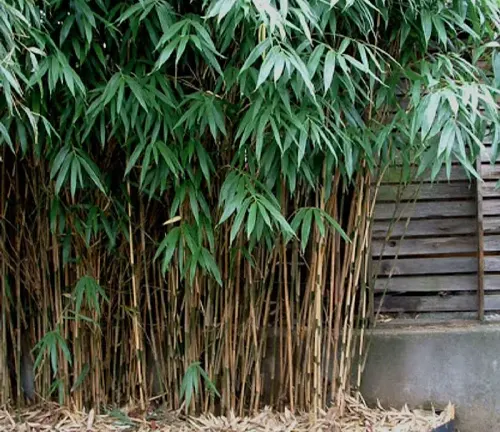
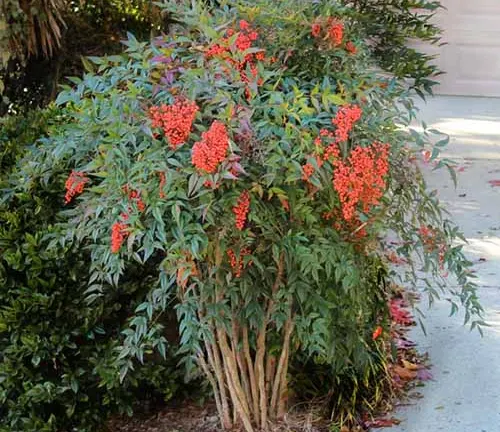
Sacred Bamboo
(Nandina domestica)
While not a true bamboo, Sacred Bamboo is included here due to its name. It’s an ornamental shrub with bamboo-like leaves, often used in landscaping.
Hardy Bamboo
(Fargesia spp.)
These clumping bamboo species are known for their cold hardiness, making them suitable for cooler climates. Fargesia murielae (Umbrella Bamboo) is a well-known example.
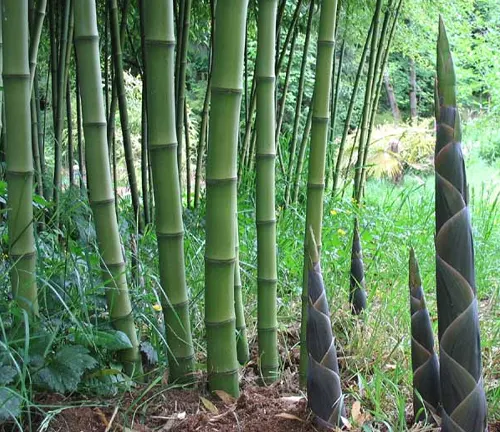
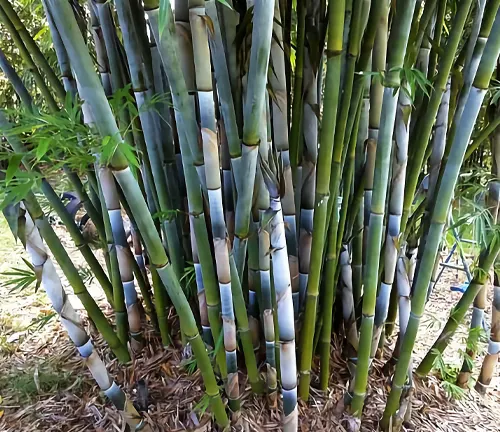
Tropical Blue Bamboo
(Bambusa chungii ‘Barbellata’)
This bamboo species is admired for its unique blue-colored culms. It’s a clumping bamboo that adds a touch of tropical elegance to gardens.
Frequently Asked Questions (FAQs)
- What is Bamboo?
Bamboo is a type of fast-growing, woody grass belonging to the subfamily Bambusoideae. It is known for its tall, slender stems and versatile uses. - How fast does Bamboo grow?
The growth rate of Bamboo varies among species, but some can grow several feet in a matter of weeks due to their rapid and efficient photosynthesis. - Where does Bamboo grow?
Bamboo is found in diverse climates, ranging from tropical to temperate regions. It is prevalent in Asia, Africa, the Americas, and other parts of the world. - What are the environmental benefits of Bamboo?
Bamboo is an eco-friendly plant that absorbs carbon dioxide and releases oxygen, contributing to environmental sustainability. Its rapid growth makes it a renewable resource. - What are the different uses of Bamboo?
Bamboo has numerous applications, including construction materials, furniture, paper, textiles, culinary utensils, and decorative items. It is also used for soil stabilization and erosion control. - Is Bamboo a tree or grass?
Despite its tree-like appearance, Bamboo is classified as a grass. It belongs to the Poaceae family, which includes grasses. - How do you care for Bamboo plants?
Bamboo generally requires well-drained soil, adequate water, and sunlight. Some species may need containment measures to prevent invasive spreading. - Can Bamboo be grown indoors?
Certain dwarf and clumping bamboo varieties can be grown indoors in containers. However, they still require sufficient light and care. - Does Bamboo spread uncontrollably?
Some species of Bamboo are known as “running” types and can spread aggressively. Clumping varieties are more contained and are often preferred for controlled growth. - What is the lifespan of Bamboo?
The lifespan of Bamboo varies by species. Some can live for several decades, while others may have shorter lifespans. Harvesting can also affect the plant’s overall life cycle. - Are there invasive Bamboo species?
Yes, certain running Bamboo species have a reputation for being invasive. It’s important to choose clumping varieties or use containment methods to control their spread. - Can Bamboo be used for construction?
Bamboo is a popular construction material in many parts of the world. Its high strength-to-weight ratio makes it suitable for various structural applications. - Is Bamboo edible?
While some animals eat Bamboo, certain Bamboo shoots are also edible for humans. However, proper preparation is necessary, as some species contain toxins. - How can I control the spread of Bamboo in my garden?
Containment measures, such as installing barriers or regular pruning, can help control the spread of running Bamboo. Choosing clumping varieties is another option. - Is Bamboo suitable for landscaping?
Yes, Bamboo is commonly used in landscaping for its aesthetic appeal, versatility, and ability to create natural privacy screens or windbreaks.


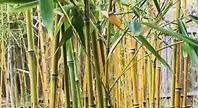
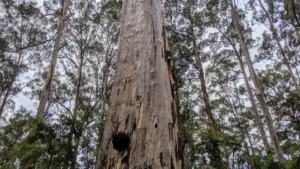
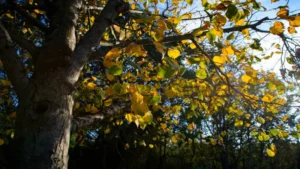
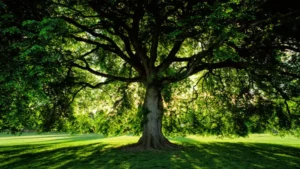
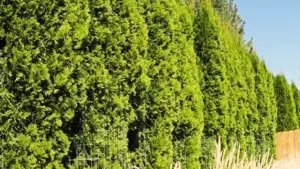
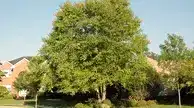
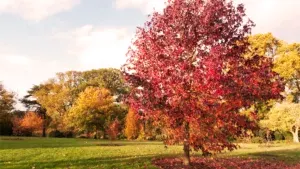
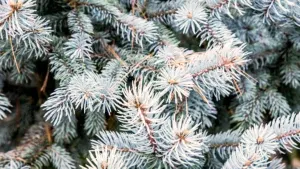
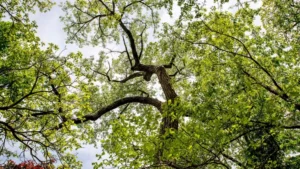
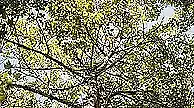

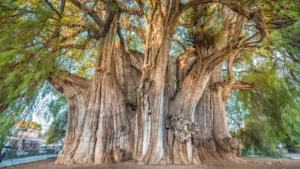

Leave your comment